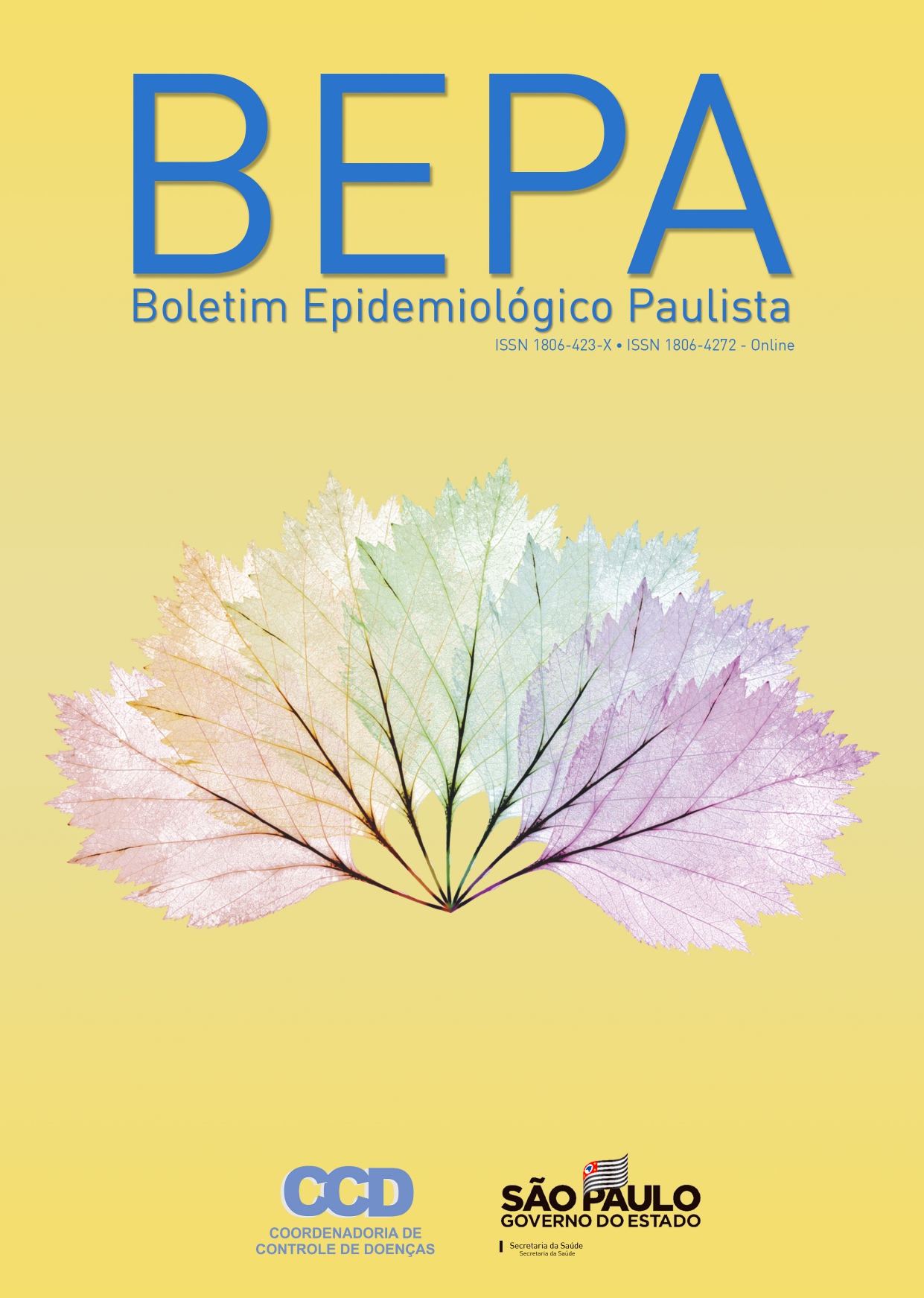Referências
1. Angerami RN, Câmara M, Pacola MR, Rezende RCM, Duarte RMR, Nascimento, EMM et
al. (2012). Features of Brazilian spotted fever in two different endemic areas in Brazil.
Ticks Tick Borne Dis. 3, 345-7. doi: 10.1016/j.ttbdis.2012.10.010
2. Angerami RN, Resende MA, Feltrin AFC, Katz G, Nascimento EM, Stucchi RSB et al.
(2006). Brazilian spotted fever: a case series from an endemic area in southeastern
Brazil. Ann. N.Y.Sci. 1078, 252-4.
3. Secretaria de Estado da Saúde de São Paulo. A Febre Maculosa Brasileira na Região
Metropolitana de São Paulo. Boletim Epidemiológico Paulista (BEPA). Volume 13, nº 151
de julho de 2016.
4. Krawczak FS, Nieri-Bastos FA, Nuns FP, Soares FP, Moraes-Filho J, Labruna MB.
Rickettsial infection in Amblyomma cajennense ticks and capybaras (Hydrochoerus
hydrochaeris) in a Brazilian spotted fever-endemic area. Parasit Vectors. 2014; 7:7.
Disponível em: http://www.ncbi.nlm.nih.gov/pmc/articles/PMC3892071/pdf/1756-
3305-7-7.pdf.
5. Labruna MB, Ogrzewalska M, Soares JF, Martins TF, Soares HS, Moraes-Filho J, et al.
Experimental infection of Amblyomma aureolatum ticks with Rickettsia rickettsii.
Emerg Infect Dis. 2011 May; 17(5):829-34. Disponível em: http://wwwnc.cdc.gov/eid/
article/17/5/10-1524_article.
6. Ogrzewalska MH, Saraiva DG, Moraes-Filho J, Martins TF, Costa FB, Pinter A, et al.
Epidemiology of Brazilian spotted fever in the Atlantic Forest, state of São Paulo, Brazil.
Parasitology. 2012; 139(10): 1283-300.
7. Pinter A, Labruna MB. Isolation of Rickettsia rickettsii and Rickettsia bellii in cell culture
from the tick Amblyomma aureolatum in Brazil. Ann N Y Acad Sci. 2006 Oct;1078:523-9.
8. Pinter A, França AC, Souza CE, Sabbo C, Nascimento EMM, Santos FCP, et al. Febre
Maculosa Brasileira. Suplemento Bepa. 2011 Out; 8(1). Disponível em: http:// www.
saude.sp.gov.br/resources/sucen/homepage/downloads/arquivos-de-febre-maculosa/
bepa94_suplemento_fmb.pdf.
9. Pinter A, Horta MC, Pacheco RC, Moraes J Filho, Labruna MB. Serosurvey of Rickettsia
spp. in dogs and humans from an endemic area for Brazilian spotted fever in the State
of São Paulo, Brazil. Cad. Saúde Pública 2008; 24(2):247-252. Disponível em: http://
www.scielo.br/pdf/csp/v24n2/02.pdf
10. Saraiva GS, Soares HS, Soares JF, Labruna MB. Feeding Period Required by Amblyomma
aureolatum Ticks for Transmission of Rickettsia rickettsii to Vertebrate Hosts. Emerg
Infect Dis. 2014 Sep; 20(9):1504-10. Disponível em: http://wwwnc.cdc.gov/eid/
article/20/9/14-0189article
al. (2012). Features of Brazilian spotted fever in two different endemic areas in Brazil.
Ticks Tick Borne Dis. 3, 345-7. doi: 10.1016/j.ttbdis.2012.10.010
2. Angerami RN, Resende MA, Feltrin AFC, Katz G, Nascimento EM, Stucchi RSB et al.
(2006). Brazilian spotted fever: a case series from an endemic area in southeastern
Brazil. Ann. N.Y.Sci. 1078, 252-4.
3. Secretaria de Estado da Saúde de São Paulo. A Febre Maculosa Brasileira na Região
Metropolitana de São Paulo. Boletim Epidemiológico Paulista (BEPA). Volume 13, nº 151
de julho de 2016.
4. Krawczak FS, Nieri-Bastos FA, Nuns FP, Soares FP, Moraes-Filho J, Labruna MB.
Rickettsial infection in Amblyomma cajennense ticks and capybaras (Hydrochoerus
hydrochaeris) in a Brazilian spotted fever-endemic area. Parasit Vectors. 2014; 7:7.
Disponível em: http://www.ncbi.nlm.nih.gov/pmc/articles/PMC3892071/pdf/1756-
3305-7-7.pdf.
5. Labruna MB, Ogrzewalska M, Soares JF, Martins TF, Soares HS, Moraes-Filho J, et al.
Experimental infection of Amblyomma aureolatum ticks with Rickettsia rickettsii.
Emerg Infect Dis. 2011 May; 17(5):829-34. Disponível em: http://wwwnc.cdc.gov/eid/
article/17/5/10-1524_article.
6. Ogrzewalska MH, Saraiva DG, Moraes-Filho J, Martins TF, Costa FB, Pinter A, et al.
Epidemiology of Brazilian spotted fever in the Atlantic Forest, state of São Paulo, Brazil.
Parasitology. 2012; 139(10): 1283-300.
7. Pinter A, Labruna MB. Isolation of Rickettsia rickettsii and Rickettsia bellii in cell culture
from the tick Amblyomma aureolatum in Brazil. Ann N Y Acad Sci. 2006 Oct;1078:523-9.
8. Pinter A, França AC, Souza CE, Sabbo C, Nascimento EMM, Santos FCP, et al. Febre
Maculosa Brasileira. Suplemento Bepa. 2011 Out; 8(1). Disponível em: http:// www.
saude.sp.gov.br/resources/sucen/homepage/downloads/arquivos-de-febre-maculosa/
bepa94_suplemento_fmb.pdf.
9. Pinter A, Horta MC, Pacheco RC, Moraes J Filho, Labruna MB. Serosurvey of Rickettsia
spp. in dogs and humans from an endemic area for Brazilian spotted fever in the State
of São Paulo, Brazil. Cad. Saúde Pública 2008; 24(2):247-252. Disponível em: http://
www.scielo.br/pdf/csp/v24n2/02.pdf
10. Saraiva GS, Soares HS, Soares JF, Labruna MB. Feeding Period Required by Amblyomma
aureolatum Ticks for Transmission of Rickettsia rickettsii to Vertebrate Hosts. Emerg
Infect Dis. 2014 Sep; 20(9):1504-10. Disponível em: http://wwwnc.cdc.gov/eid/
article/20/9/14-0189article

Este trabalho está licenciado sob uma licença Creative Commons Attribution 4.0 International License.
Copyright (c) 2021 Adriano Pinter, Cristina Sabbo, Ruth Leite, Roberta Spinola, Rodrigo Angerami
Downloads
Não há dados estatísticos.
Métricas
Carregando Métricas ...




